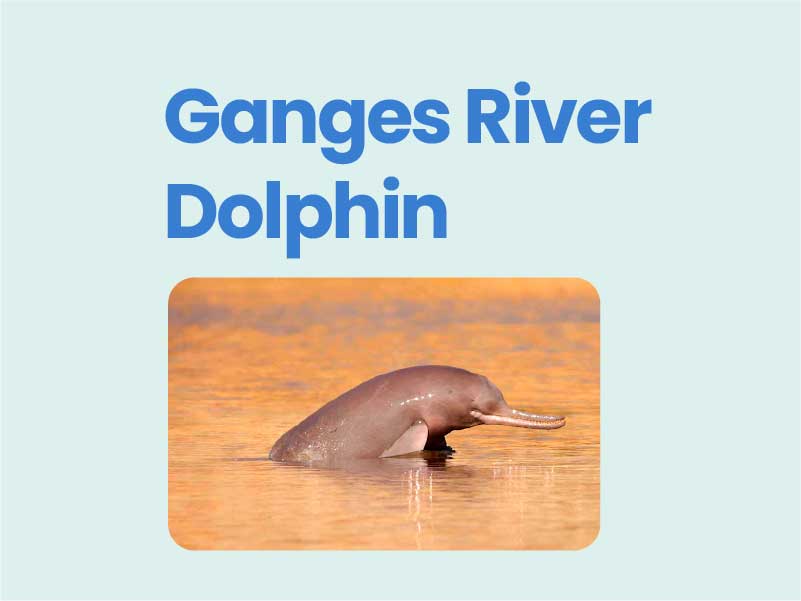Companion@360 → 7 Month programme to sharpen your writing skills → REGISTER NOW

Ganges River Dolphin
Ganges River dolphin (Platanista gangetica gangetica) occur in the Ganges-Brahmaputra River system primarily in India and Bangladesh. They are listed as Endangered by the IUCN due to a probable population decline of at least 50% over the last 50 years and projected future population declines.
- No quantitative estimates of abundance are available for the Ganges River dolphin although an overall abundance of about 2000 has been suggested. Dolphins have been extirpated from the upper reaches of many rivers, the population has been fragmented by irrigation barrages and dry season habitat is further reduced by diversion of water.
- In comparison to the Ganges, the Brahmaputra River is less degraded and is therefore of great importance for persistence of the subspecies. For this reason, a recent proposal by Oil India Ltd. to initiate seismic exploration (using explosives and airguns) along the bed of the Brahmaputra River to prospect for oil has potentially disastrous implications for Ganges River dolphins.
- This project was designed to provide missing baseline information on distribution, abundance, behaviour and acoustics of Ganges River dolphins in the Brahmaputra River and suggest suitable locations to establish protected areas.
- The hope is that the robust scientific data generated will enable informed management decisions that will safeguard this important and vulnerable population.
- An extensive survey was conducted in the entire 1044 km of dolphin inhabited sections of the Brahmaputra River from the Assam-Arunachal Pradesh border to India-Bangladesh border.
- The best estimate of 264 dolphins in the entire Brahmaputra River system was recorded, with 80.3% occurring in the Brahmaputra mainstream, 11% in the Kulsi River and 8.7% in the Subansiri River.
- Dolphin encounter rate in the Brahmaputra was 0.24 dolphin/km, in the Kulsi was 0.40 dolphin/km and in the Subansiri it was 0.24 dolphin/km. Behavioural studies on dive time and surfacing interval and acoustic investigations were also carried out in two dolphin hotspots.
- Dolphins spent an average 107.3 seconds under water and 1.26 seconds above water. Mortality through fisheries by-catch was identified as one of the major threats to Ganges dolphins in the Brahmaputra.
- Based on high abundance, potential for protection and possibilities for dolphin eco-tourism, eight river sections were identified as potential protected areas and community-based conservation areas.
Major Threats:
- Unintentional killing through entanglement in fishing gear.
- Poaching for dolphin oil, used as fish attractant and for medicinal purposes.
- Habitat destruction due to development projects (e.g. water extraction and the construction of barrages, high dams and embankments), pollution (industrial waste and pesticides, municipal sewage discharge and noise from vessel traffic) and overexploitation of prey mainly due to the widespread use of non-selective fishing gear.
- Fragmented populations created by dams and barrages have degraded downstream habitat and created impoundments with high sedimentation and altered assemblages of fish and invertebrate species.

